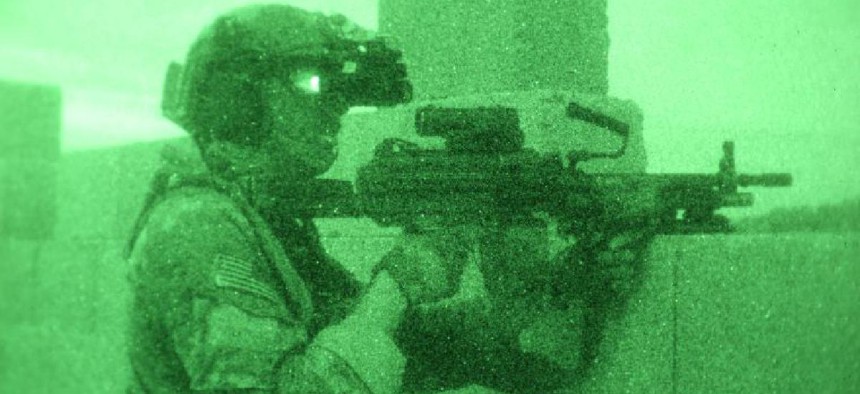Army tests network security, cyber tools in war games

Army officials said the Joint Warfighting Assessment exercise demonstrated that while the Army was able to create and share data across a multi-partner environment in a multi-partner network, the constructed virtual environment had its limitations.

An Army Ranger on a night raid during Army's 2018 Joint Warfighting Assessment in Germany. (Image credit: U.S. Army photo by Spc. Tadow McDonald)
The Army's tactical network continues to be a significant challenge as the service moves quickly to enhance its data-sharing abilities to support Joint All Domain Command and Control. But the latest Joint Warfighting Assessment exercise highlighted disparities when fighting against simulated and live cyber intrusions.
"There were aspects of cyber that we did play live/real, in this and those were easier to replicate and assess. And then [there were] aspects of cyber and space that we replicated notionally and those were the ones that were a little bit more difficult," said Col. Tobin Magsig, Commander, Joint Modernization Command, which was the exercise control for this year's JWA experiment that ran from June 16 through June 24.
Officials wouldn't give specifics, but the exercise used fictional scenarios in Hawaii, Colorado and Washington with multinational partners across all domains. JWA included testing of future vertical lift aircraft, long-range fire capability, cyber tools and network security. They also tested sensors, extending distances and altitude from the forward line of troops, and their effect on the operational picture.
Magsig told reporters June 24 that users were comfortable with their ability to communicate and pass data, but the experiment demonstrated that while the Army was able to "establish a multi-partner environment in a multi-partner network" to seamlessly share data, using a constructed virtual environment had its limitations.
"Some things are easier in simulation or a constructed or virtual environment, and some things are harder. And the network in some areas becomes harder to simulate and stimulate activity through a virtual environment than if it [had] sensors picking up on activity that was really happening in a live domain," Magsig said.
The exercise comes as the Army contends with potential budget constraints in fiscal 2022 and prepares for a large-scale technology demonstration at this year's Project Convergence, which will feature platforms from other U.S. military services and test interoperability, data sharing and AI and network capabilities.






